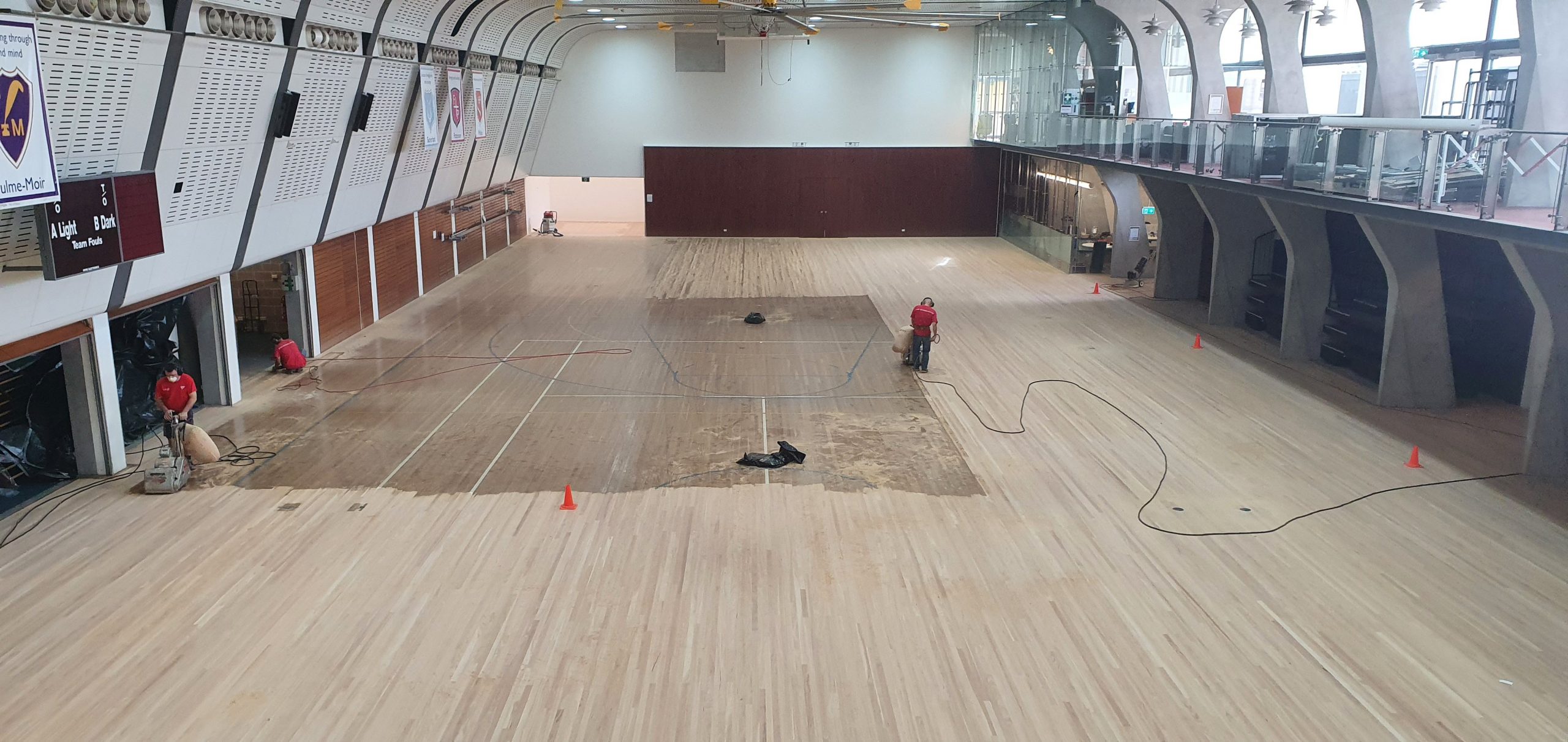Punch Off a Floor
In timber floor sanding and polishing, punching off a floor means punching down the nails below the surface of the timber floorboards. Timber floor sanding and polishing professionals punch down the nails to avoid nails damaging the sanding machines and for an even finish. After sanding, they will use a filler that matches the colour of your timber floors to cover the nails.
Re-sanding
Resanding or sanding is the process of stripping the top layer of the timber flooring to remove surface damages like scratches, dents and wear and tear.
Polishing
Polishing is the process of applying a protective finish or sealant to sanded timber floors to protect the timber floors from external damage, including scratches, dents, wear and tear and moisture.
Re-coating
Recoating or maintenance coating is the application of a new protective coat over the existing floor surface to enhance the look of timber floors. It helps remove minor scratches and blemishes on timber floors.
Cupping
Cupping is a result of increased moisture levels in timber floors. A cupped timber floorboard will have a concave shape, wire both the edges rise, forming an inward curve that looks like a cup. Timber flooring repair professionals can fix the cupped floorboard after resolving the moisture problem.
Crowning
Crowning also happens due to increased moisture levels. A crowned floorboard’s edges will shrink inwards while the middle of the plank swells up and rises above the flooring surface.
Curing
Curing is the time taken for the complete drying and hardening process once the final coating is applied. In other words, it’s the time taken by the solvents to evaporate completely from the finish so that the floor is free from odour. Different flooring finishes have varying curing times— however, temperature and humidity also play a part in the drying process.
Rejection
Rejection is the pulling back of a coating. It happens when a coating pulls back from the surface rather than adhering to the surface. It usually occurs when the protective coating becomes incompatible with the other flooring finish or a cleaning product that’s been used before. Timber floor repairing and polishing professionals may use an anti-rejection fluid to prevent the coating from pulling back.
Chatter Marks
Chatter marks are imperfections or uneven patterns that appear on the timber floors due to improper sanding. They become more visible in reflected light after staining. Incorrect drum pressure, poor alignment of sandpaper, uneven wheels or loose V-belts are some of the main reasons that cause chatter marks. Using an outdated or inferior sanding machine also causes chatter marks.
Ghosting
Ghosting is the appearance of milky white or light-coloured marks on newly coated timber floors. It appears typically in the shape of a footprint, or smudge-type patterns are also common. Ghosting is more prevalent in areas where the floor coating is in direct contact with sunlight. For instance, timber flooring near doorways is more susceptible to ghosting. Despite the extensive research made by The Australian Timber Floor Association on the exact cause of ghosting, there is still no convincing explanation for ghosting on timber floors.
Uprights, Stringers, and Treads
Uprights and stringers are components of a staircase. Uprights are the vertical boards in the stair where toes point towards while walking. Stringers are the vertical support or structural component that run on either side of the staircase or in the middle. Treads are the horizontal boards where you walk on.
Edge Bonding
Edge bonding happens when a newly applied coating bridges the gap between floorboards and bonds over the edges. It usually happens when there is barely a gap between floorboards (tightly joined), and it can be a problem when timber floorboards expand.
For more information, contact our team at Stanton Flooring, the leading timber floor sanding and polishing & timber flooring repair service in Sydney.

